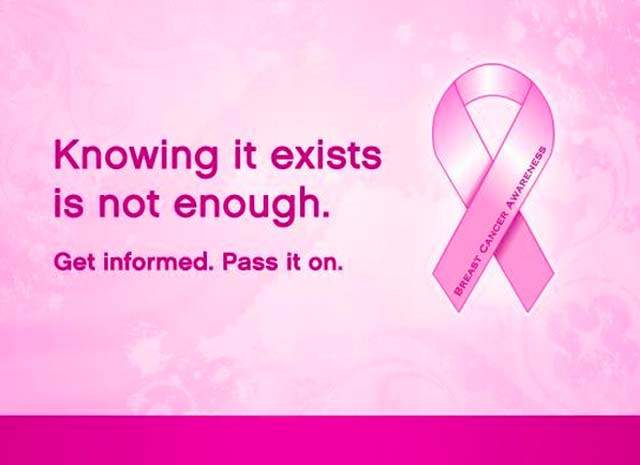 CANCER!!! The word itself is feared and dreaded by everyone around the globe. Many people who are diagnosed with this illness feel like it’s a death sentence, but it doesn’t have to be. There are ways to fight and overcome cancer.
CANCER!!! The word itself is feared and dreaded by everyone around the globe. Many people who are diagnosed with this illness feel like it’s a death sentence, but it doesn’t have to be. There are ways to fight and overcome cancer.
Before learning how to overcome cancer, it is important to understand what it is. Cancer is a group of diseases involving abnormal cell growth, which may or may not spread to other parts of the body. Not all tumors are cancerous; only malignant ones spread throughout the body, while benign ones do not.
One of the most common invasive cancers in the world today is ‘BREAST CANCER’. It is more frequently seen in developed countries, but outcomes in these regions tend to be better due to advanced healthcare.
Who is at Risk for Developing Breast Cancer?
While breast cancer is more common in Females, men can also develop it (though cases in men are rare). Risk factors include:
- Obesity
- Lack of exercise
- Sedentary lifestyle
- Hormone replacement therapy
- Early menarche
- Late pregnancy
- Nulliparous women
- Family history
- Alcohol consumption
- Smoking
Let me now take you through the 3S of Breast Cancer- Signs Symptoms and Self Examination
Look out for these Signs and Symptoms:
- The most common first symptom is a lump in the breast that feels different from the rest of the tissue.
- Dimpling or puckering of the skin on or around the nipple.
- A change in the position or shape of the nipple, which may become inverted.
- Orangish discoloration of the skin around the breast or a texture resembling an orange peel (peau d’orange).
- Nipple discharge, which could be watery, milky, yellow, or even bloody.
- One breast appearing larger than the other.
- Constant pain in the breast or armpit area.
- Swelling in the armpits or around the collarbone.
- Redness, itching, increased sensitivity, or a burning sensation.
It’s important to note that some people may not experience any symptoms until the cancer has progressed, which is why regular check-ups are vital.
How to self-examine?
The best way to be aware of breast cancer is through self-detection. Follow these steps:
Step 1: Stand in front of a mirror with your shoulders straight and your hands on your hips.
- Look at the size, shape, and color of your breasts.
- Check for dimpling, puckering, or bulging skin.
- Look for any changes in the position of your nipples or signs of inversion (a nipple that is pushed inward).
- Watch for redness, soreness, rash, or swelling.
Step 2: Raise your arms and check for the same changes.
Step 3: While standing in front of the mirror, check for any fluid discharge from the nipples, which could appear watery, milky, yellow, or even bloody.
Step 4: Lie down and feel your breasts. Use your right hand to examine your left breast and your left hand for your right breast. Apply a firm, smooth touch using the pads of your fingers in a circular motion. Cover the entire breast, from top to bottom and side to side, including from the collarbone to the top of the abdomen, and from your armpit to your cleavage.
Start at the nipple and move outward in larger circles until you reach the edge of the breast. Be sure to feel all the tissue, from the front to the back of your breasts.
Step 5: Finally, feel your breasts while standing or sitting. Many women find that it’s easiest to feel their breasts when their skin is wet and slippery, such as during a shower. Use the same hand movements as described in Step 4.
Breast Cancer Support Groups:
Support groups play a crucial role in helping patients fight cancer. These groups provide an opportunity to learn from others who have faced the same disease. Seeing other survivors can give patients the strength and hope they need to fight their own battles. Remember, hope is everything.
We hope this article helped you understand the signs, symptoms, and steps to perform a self-examination for breast cancer. Regular check-ups and self-awareness can make all the difference in early detection and treatment. Have any questions or experiences to share? Let us know in the comments below! You can also find more articles on Women’s Health here. Stay informed, stay healthy!
#BeTheForce
Disclaimer: The information provided in this blog is for general awareness and educational purposes only. It is not intended to replace professional medical advice, diagnosis, or treatment. Always consult a qualified healthcare provider for personalised medical guidance or concerns related to your health.




It’s very useful information about cancer thank you for sharing this information.
Nice one,Useful content.Thanks for sharing.
Happy to help
Can u help me for the same…. I ont know I have breast cancer or not… But I feel uneasiness in breast nd armpit area and also some time back opposite to my breast.. Nd also breathlessness… Nd deep breathing..